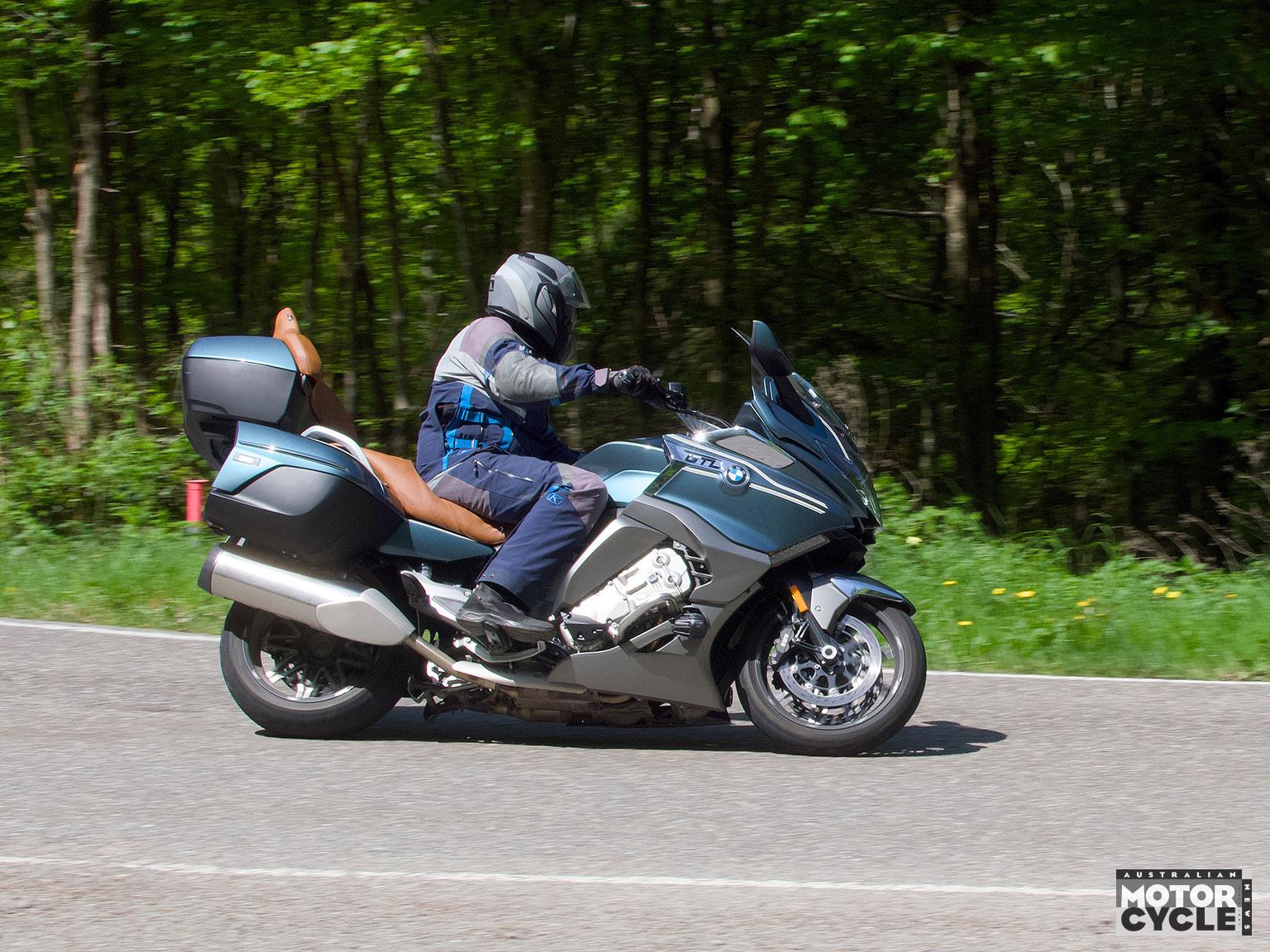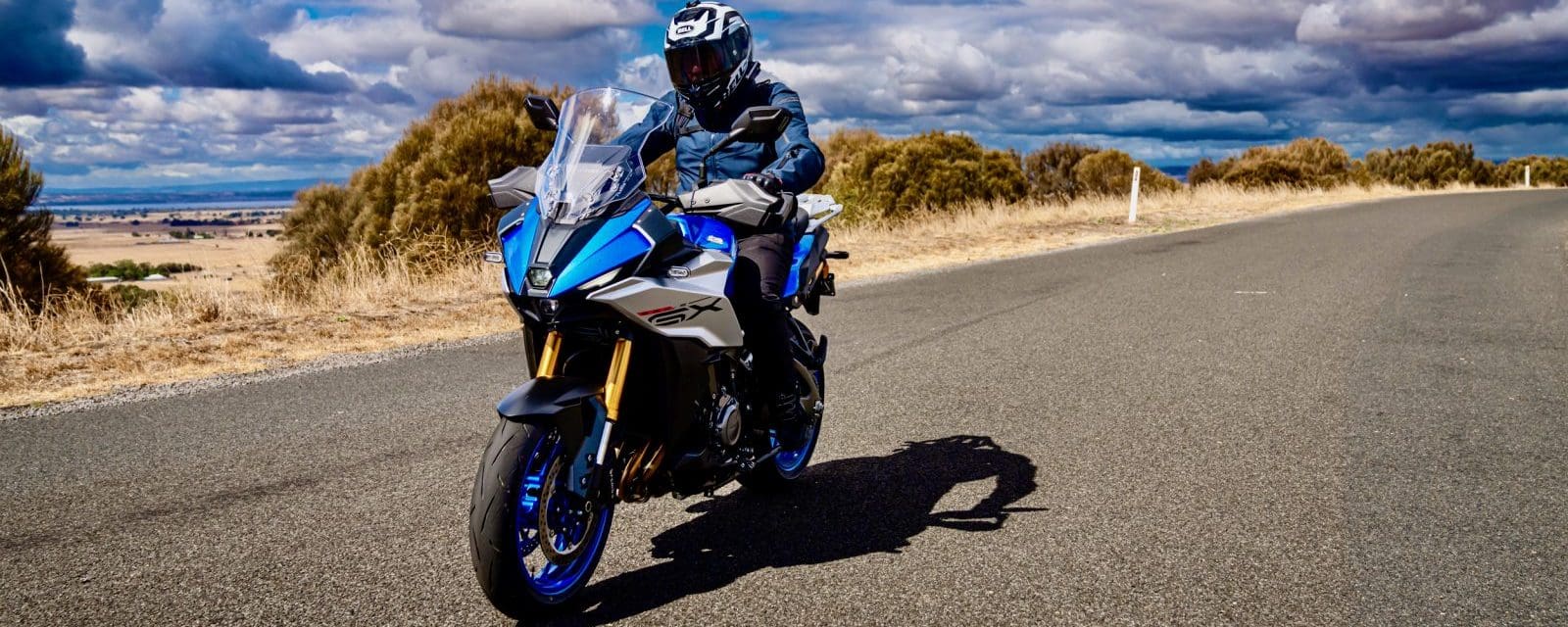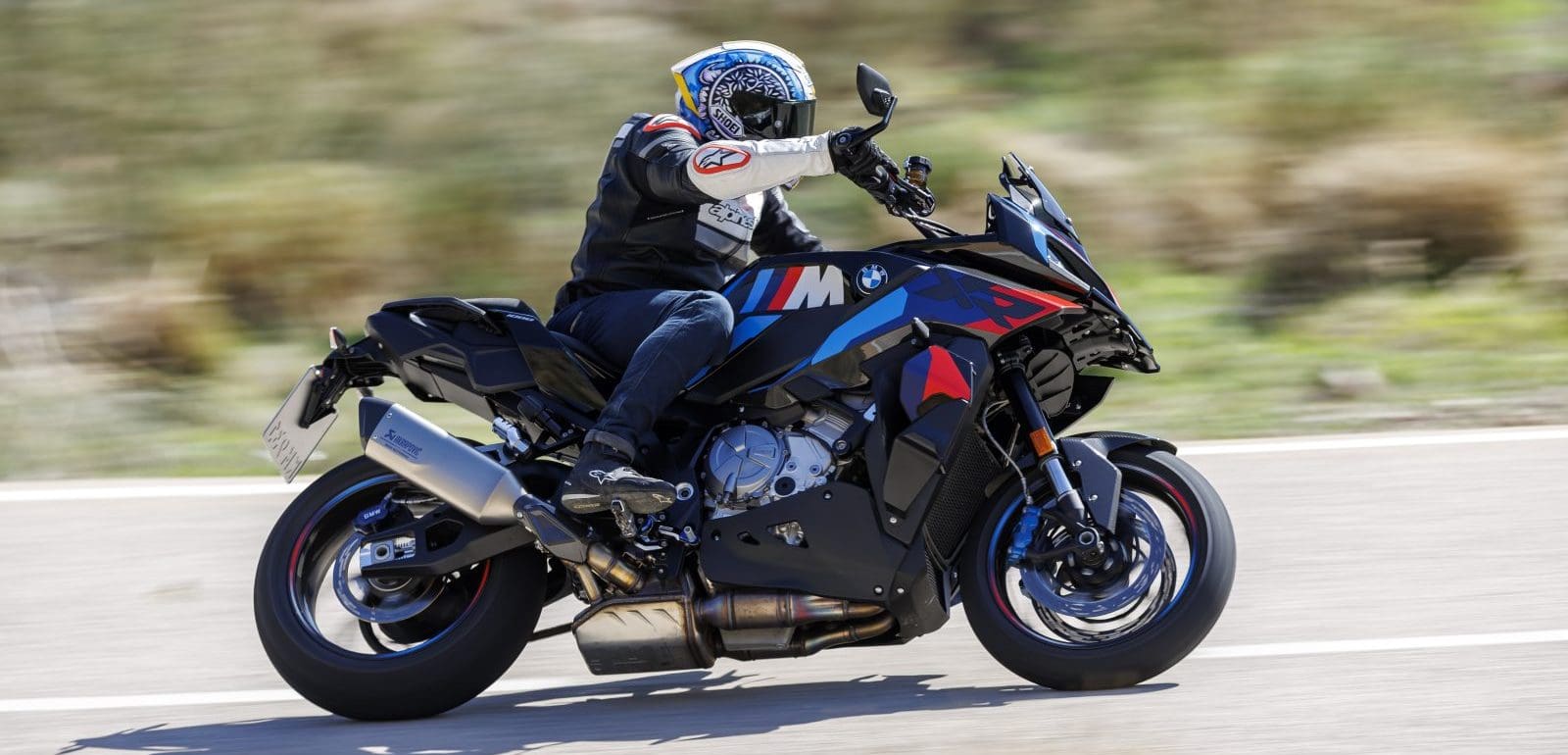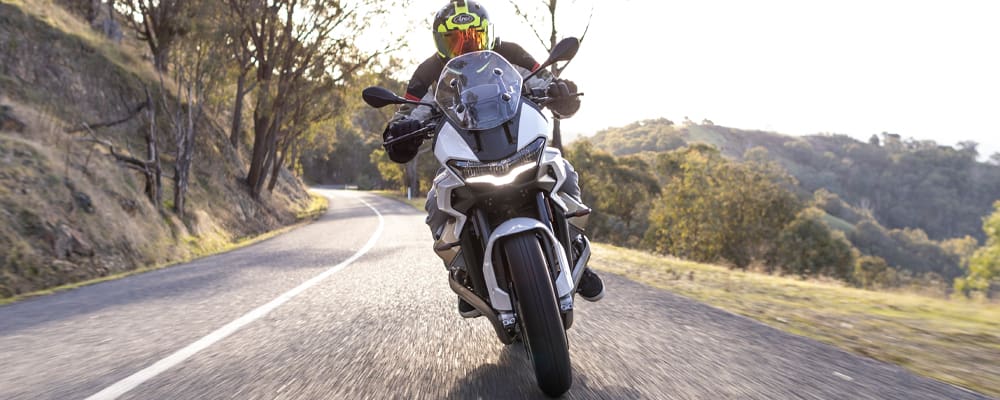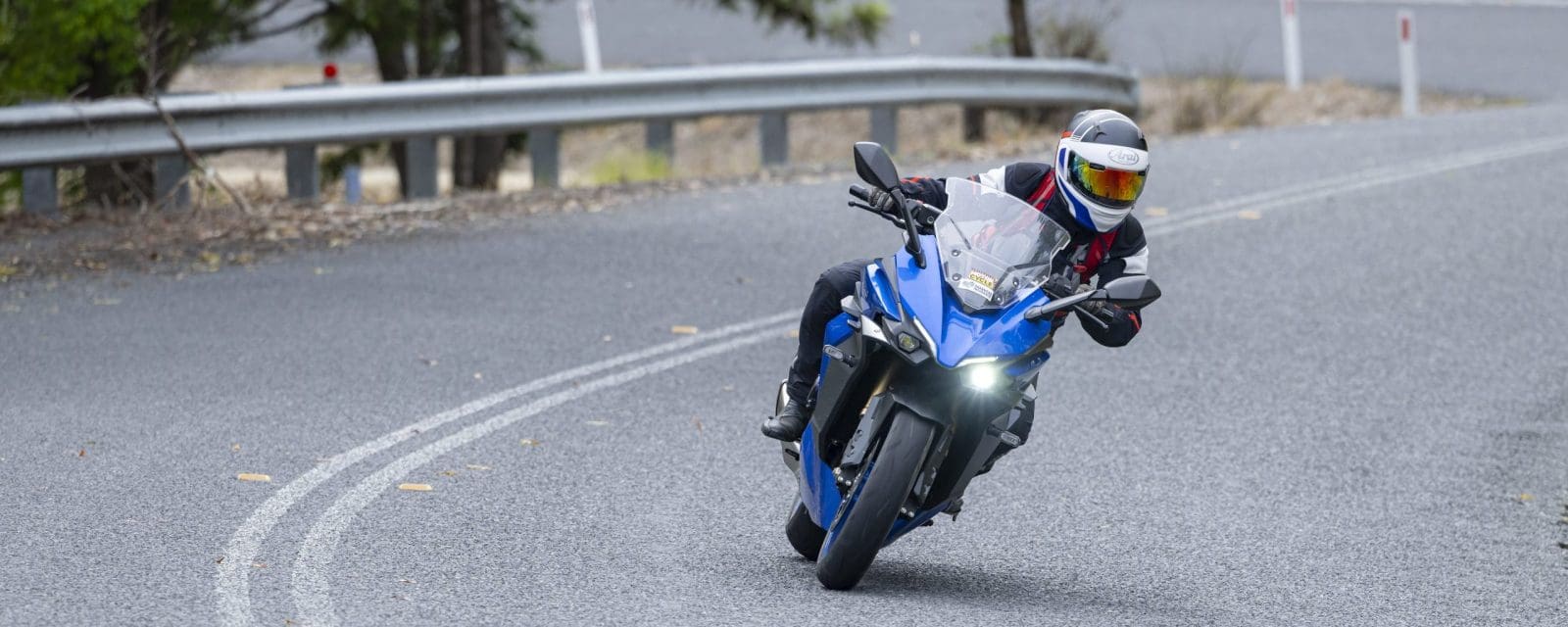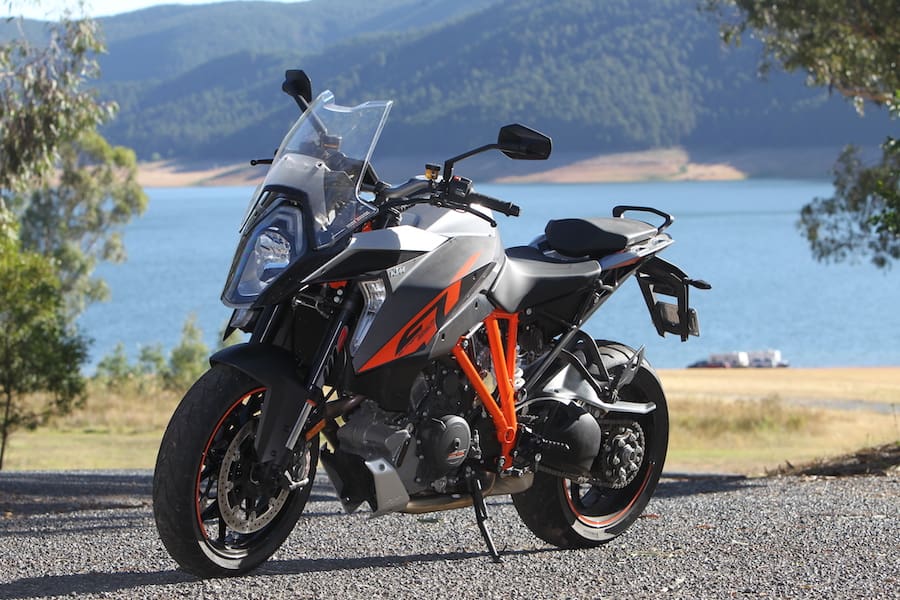Today, an M series BMW has fairings designed not so much to keep the wind and rain off its rider as to keep the front wheel somewhere near the ground as 200 rampant horsepower is fed to the rear wheel.
It has state-of-the-art electronic rider aids that optimise grip and stability and, on a racetrack, can elevate ordinary people with ordinary skills to a level of riding that, until recently, was the preserve of pro racers alone. This particular M BMW, the all-new M 1000 XR, also has the potential to roam the country with more real-world speed than any machine before it.
 The M 1000 XR is the third model from the German manufacturer to receive the high-performance M treatment. And if the M 1000 R and M 1000 RR that came before it are lighter, faster brain-twisting versions of the S 1000 R supernaked and S 1000 RR superbike, the M 1000 XR, which adds over 22kW (30hp), an aero package, acres of carbon fibre and the most sophisticated rider aids available on a production machine to the S 1000 XR, looks set to redefine the meaning of sports-touring. But sensible it is not.
The M 1000 XR is the third model from the German manufacturer to receive the high-performance M treatment. And if the M 1000 R and M 1000 RR that came before it are lighter, faster brain-twisting versions of the S 1000 R supernaked and S 1000 RR superbike, the M 1000 XR, which adds over 22kW (30hp), an aero package, acres of carbon fibre and the most sophisticated rider aids available on a production machine to the S 1000 XR, looks set to redefine the meaning of sports-touring. But sensible it is not.
I can’t recall anyone ever complaining that the base S 1000 XR is underpowered or lacking in excitement, but the M nevertheless arrives in showrooms with a 148kW (198hp) peak power output and downforce-generating wings. Like Ducati, who recently unveiled the utterly unhinged Multistrada V4 RS, BMW has clearly concluded that in 2024 a distance machine can be, and have, anything – that breathtaking engine performance and WorldSBK aerodynamics can sit alongside all-day comfort once found only on luxury long-distance machines.
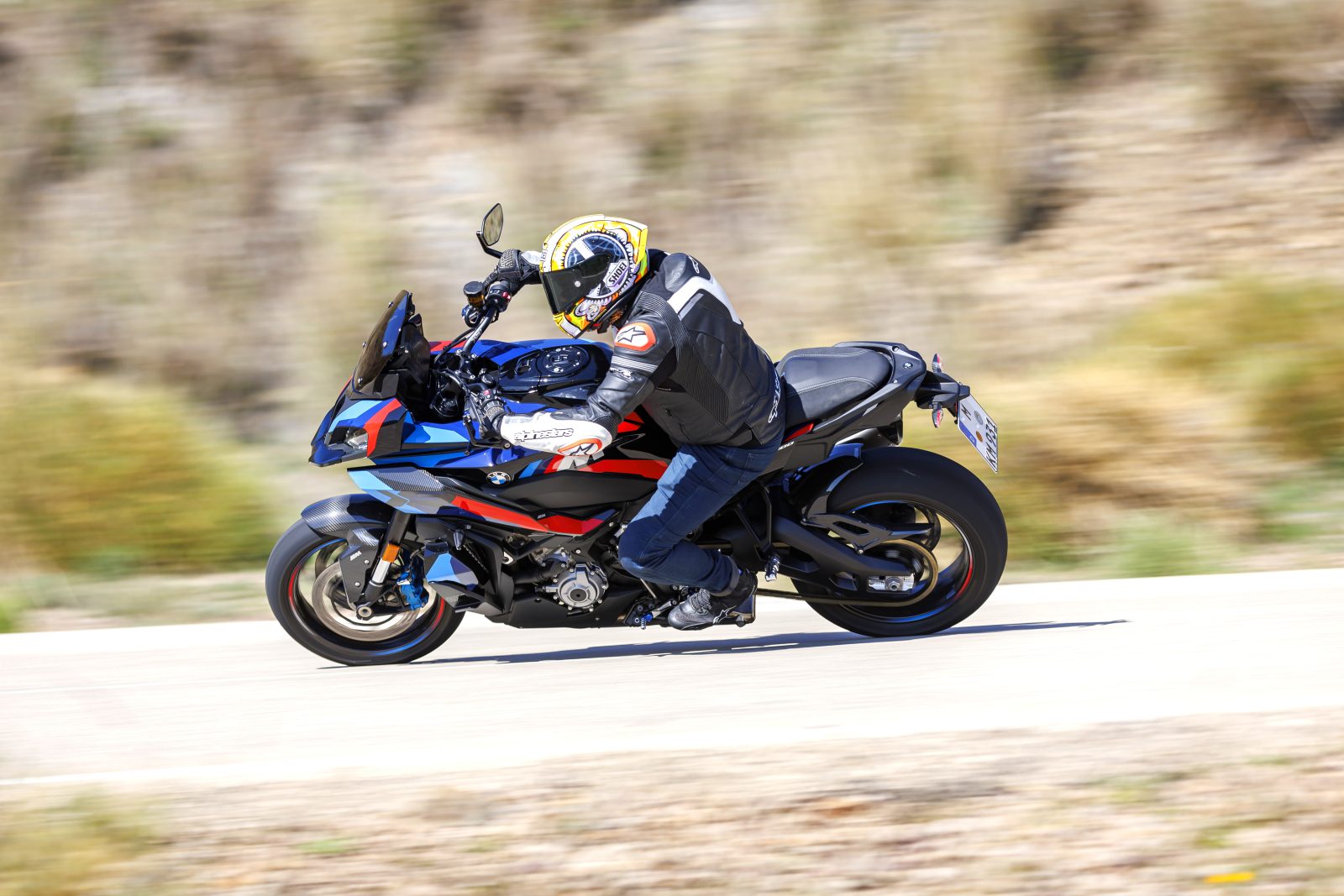
Starting with its engine, the M 1000 XR gets a modified version of the S 1000 R’s ShiftCam 999cc in-line four, producing almost 200 horsepower at 12,750rpm. Peak torque is 113Nm at 11,000rpm with the redline at a giddy 14,600rpm. The final gearing and top three cogs in the gearbox are slighty shorter than the S 1000 XR’s and there is Pro Shift Assist for slicker gearchanges and an anti-hopping clutch.
BMW says that the M 1000 XR is more powerful across the whole rev range than the S 1000 XR and 1.3 seconds faster from 0-200km/h – and, frankly, I was a little intimidated as I approached it for my first ride. There’s a huge amount of angular carbon plus those protruding wings. And being a long-legged tourer, it’s tall.
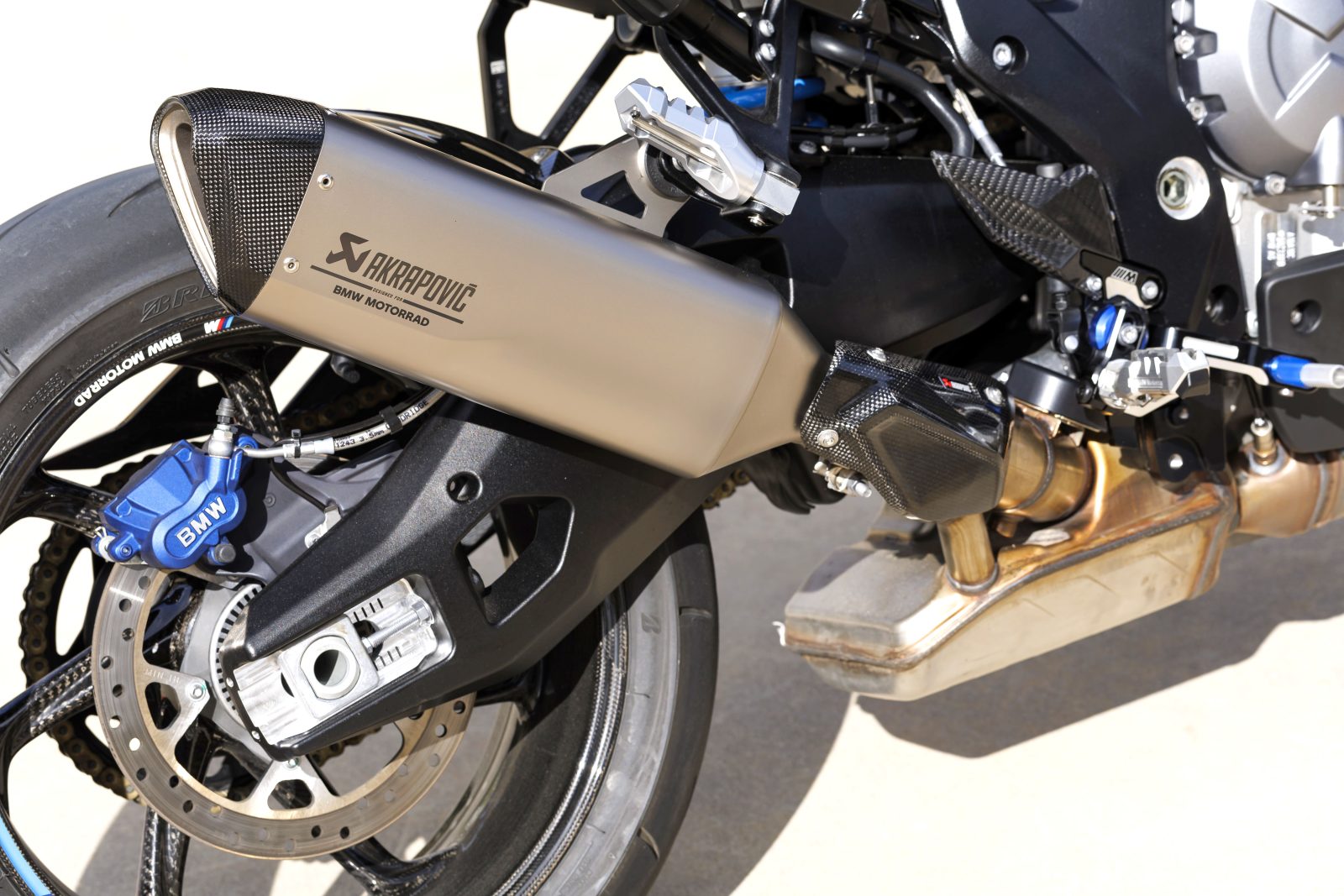
However, within a few kays of leaving BMW’s test base in southern Spain it was apparent that this special M is more than a WorldSBK racer on stilts. The ShiftCam means it isn’t peaky and, at low speeds, it’s easy going and docile. In fact, around town the odd burble from the Akrapovic exhaust is the only indication you’re riding something special.
As the pace and revs pick up the M 1000 XR drives hard but without drama through a strong midrange. The engine is smooth and there’s an air of nonchalant sophistication as you nudge the quickshifter up and down, enjoying the torque and a brisk, satisfying ride.
Sitting tall and supremely comfortable in a deep plush seat, arms gently stretched to an accommodatingly wide handlebar, everything is much as it would be on the base S 1000 XR. Then you open the throttle, release as many of those 200 horses as you dare, and everything changes. The acceleration, initially at least, feels shockingly violent and, on the freeway, our testbike stampeded to 260km/h before I could even think about it. I had to recalibrate and adjust to the M’s natural pace.
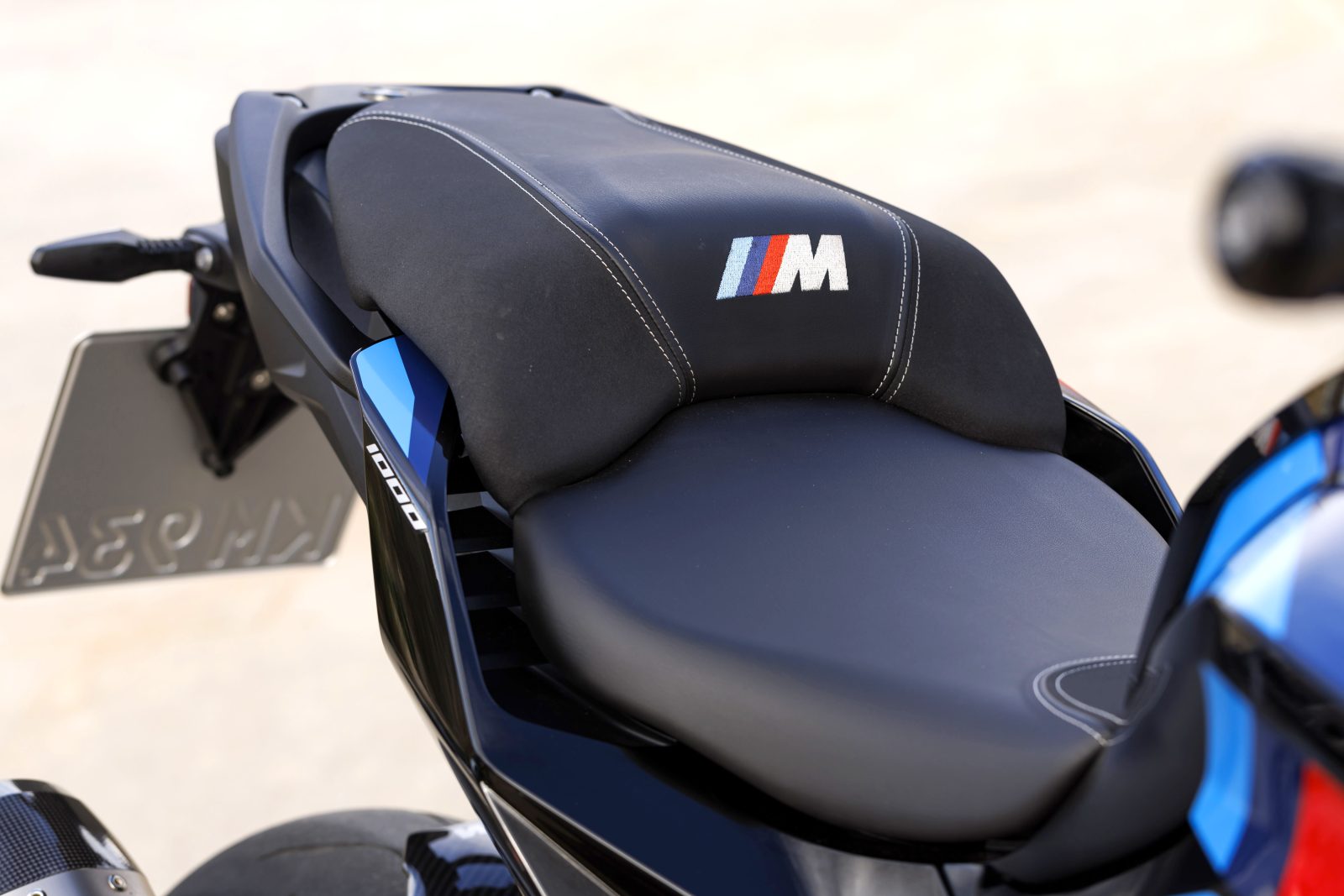
The acceleration is brutal but the bike itself remains unmoved by the drama it’s creating, and there’s a strange disconnect between its pace and its riding position. On a pure sportsbike you are hunched over and probably wearing race leathers, so 200km/h feels fast. On the M 1000 XR, however, you just sit there… twist the throttle… and potentially go straight to prison. Truly, speeding has never been so easy.
Most roads and even racetracks are too small for this machine. Its natural habitats are the unrestricted Mountain section of the Isle of Man or the Nürburgring in Germany. On less-than-perfect road surfaces in Spain, with the rider aids working overtime to control a cold Bridgestone RS11 rear tyre, I only once summoned the bravery to remove the traction control (which can be done on the move), sit back and unleash everything it has. When I did, the acceleration was so immense my brain seized like a cheap two-stroke, and that was without revving close to that 14,600rpm redline. In all honesty, I was playing with it. Tickling it.
All this raucous performance is managed and supported by a six-axis IMU and easily interchangeable riding modes, plus quadruple-wing M winglets which, at 220km/h, produce a claimed 11.4kg of downforce. The suspension is, of course, fully adjustable and also electronically set by Dynamic Damping Control with base settings linked to each riding mode, and the steering damper is adjustable too.

When you are in Road, Race or Dynamic modes, the suspension self-adjusts to your riding and the conditions on the move. However, in any one of the Race Pro modes you can fine-tune the suspension, adjusting compression and rebound damping electronically, which then becomes fixed and doesn’t change on the move. The theory is that once you’ve set the suspension you have a base set-up for the track which can then be tweaked once you get back to the pits and do so via a few presses of a button rather than having to use grubby tools.
The rider, meanwhile, sits tall on an 850mm-high seat and suspension with 138mm of travel. The ’bar is flat and wide, there’s a superb 6.5-inch TFT colour display and cruise control, and heated grips switched on. In other words, you are set up nicely to tour like Isle of Man TT legend Peter Hickman would.
At 223kg, or 220kg on our M Competition testbike, the M 1000 XR is hardly lithe or minimalist. In fact, its girth and height give the impression of a heavy machine, but on the road it doesn’t feel it. Some of the surfaces we encountered would be more suitable for a supermoto than a 200hp sports-tourer, but the M absolutely nailed the tight switchback sections.

The steering is light, the ride is plush, the suspension control complete. Push it a little and the M 1000 XR reveals responsive sportsbike-like handling that makes it capable of embarrassing full-on sportsbikes, especially on imperfect roads.
That 3kg weight saving is due to the carbon wheels fitted to our testbike – the base M gets forged rims – which also reduce rotating and unsprung mass and help it steer and change direction with stunning speed and accuracy. Stopping power is impressive, while the ABS system is lean-sensitive and changeable. Engine-brake strategies can also be tailored to match the ride, but we really need a track test to explore the potential of both.
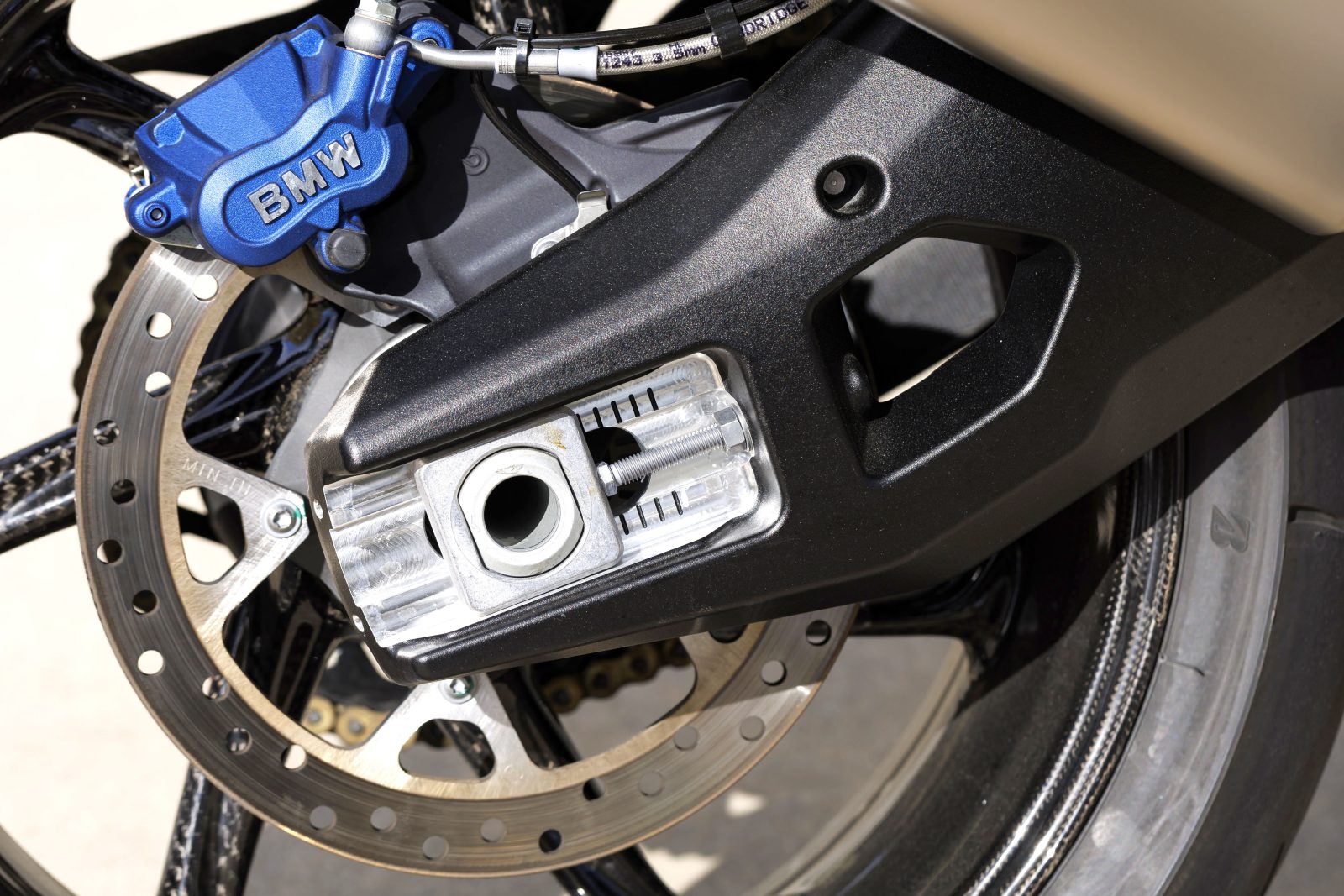
Comfort over a day in the saddle is good thanks to the natural riding position. There’s a supportive seat, that cruise control and those heated grips, an adjustable screen and the plush ride quality of semi-active suspension. In fact, I can’t think of many bikes that combine such blistering performance with such a high level of comfort – and this combination is the M’s ace card.
Unfortunately, we only got a taste of the M’s touring potential – and it should be noted that it is not equipped to carry panniers or a topbox – and we need to revisit the bike to test its high-speed fuel consumption, tank range and vibrations, but initial impressions are favourable.
As with all new BMWs, there are countless options and accessories to choose from. BMW’s online configurator is the place to look for official accessories, including the M Competition package, which is similar to those found on the M 1000 R and M 1000 RR and includes the M GPS-laptrigger and carbon and billet parts, plus those carbon wheels and Blackstorm paintwork.
The level of finish, packaging and detailing is supremely high, while the rider aids are accessible and give an endless list of options. The XR can be tailored for fast laps of Phillip Island or a run to the shops. And while the pitlane limiter may be designed for trackdays, I can see it being deployed on the road, too, especially through school zones.
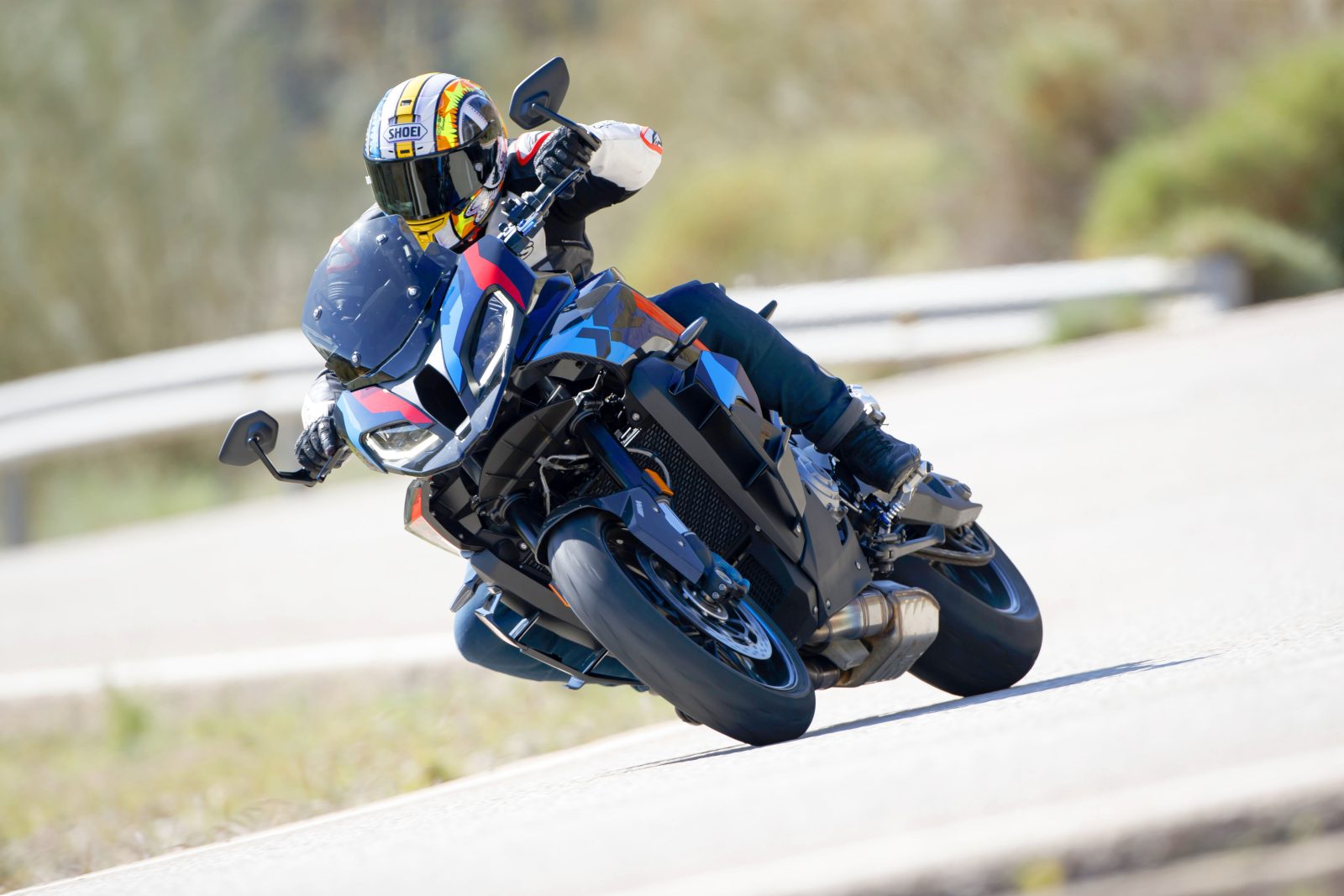
Overall, I don’t think there is any other bike on the market that so perfectly matches speed, power, handling and comfort and the practicality of a bike that can be ridden every day. On the German autobahn the M will eat up miles at a rate not many bikes, if any, will be able to match – certainly not in a way that will leave you as fresh and unfatigued as the BMW will.
Kawasaki has the Supercharged SX, but it can’t get close to the M in the corners and isn’t as versatile. Ducati has the exotic Multistrada V4 RS, which I have ridden and might run the BMW close on a tight track. But the Beemer has even more power and less weight. If there were no speed limits between Paris and Rome, this Beemer would reach the Eternal City first.
Those of a certain age may recall how the landmark sports-tourers, such as the Suzuki Hayabusa and Kawasaki ZZ-R1200, had dual personalities: the smoothness and serenity of the TGV train gliding across France at 140km/h and the devastating ability to double that figure in seconds and transform your perception of what fast truly means. Yep, the M 1000 XR is the new landmark machine.
WORDS: ADAM CHILD PHOTOGRAPHY: BMW

FAST FACTS
The BMW M 1000 XR was first shown at the Isle of Man, ridden by the fastest road racer in the world and current TT lap record holder Peter Hickman.
Gearing has changed compared to the standard S 1000 XR with two more teeth on the rear sprocket, which means even more rapid acceleration.
Quoted peak power is now 148kW at 12,750rpm, with peak torque of 113Nm at 11,000rpm. If you are brave enough, it will rev to 14,600rpm. BMW claim 0-60 in 3.2 seconds.
Aerodynamic winglets appear on the M 1000 XR for the first time in this class. They produce a claimed 11.4kg of downforce at 220km/h.
The M Competition package fitted to our testbike saves 3kg. The standard weighs 223kg, only a few kilos lighter than the R 1300 GS.
MONEY MATTERS
PRICES START from $39,280 (ride away). Three colours combine into two colourway options: Light White/M Motorsport or Blackstorm Metallic/M Motorsport for the optional M Competition package, which comes in at about $7500 extra and includes a 3kg weight saving courtesy of a set of carbon wheels, carbon bodywork and the M Billet pack. That takes the price to just under $47k, depending on where you live, but that’s still $9k shy of Ducati’s starting price.

The M 1000 XR Competition is undoubtedly expensive but Ducati’s Multistrada V4 RS is the best part of $56,000, making the more powerful BMW more palatable in this class. BMW only produces three M bikes: this M 1000 XR ($39,280), the naked M 1000 R ($32,290) and the WorldSBK-spec M 1000 RR ($52,440). The new XR sits in the middle of this elite class. The standard S 1000 XR starts at $29,780, making the M Competition model nearly $17,000 more expensive.
SPECS
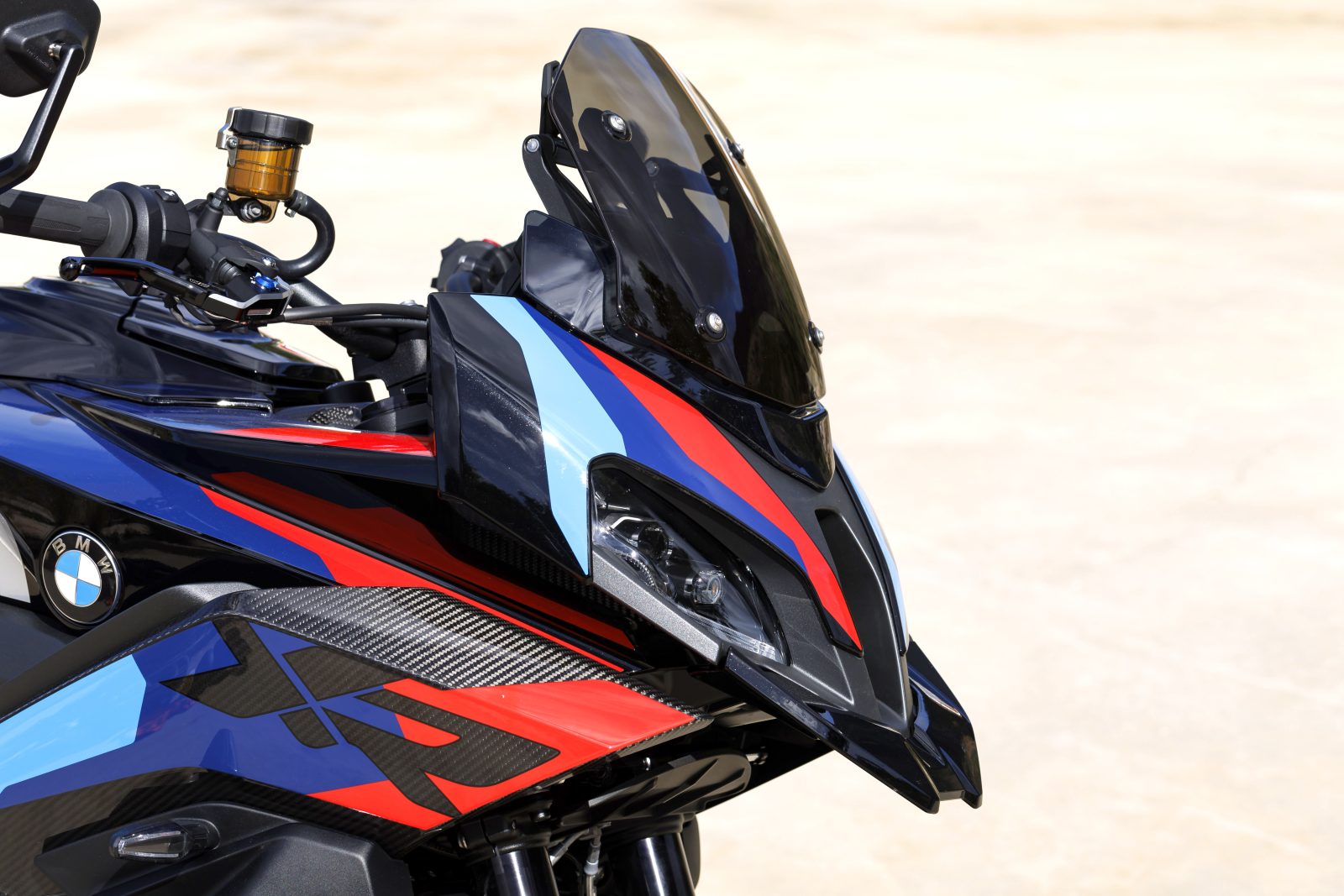
ENGINE
Capacity 999cc
Type Inline-four, DOHC, 16 valves
Bore & stroke 80 x 49.7mm
Compression ratio 13.3:1
Cooling Liquid
Fueling EFI, 4 x 48mm
throttle bodies
Transmission Six-speed
Clutch Wet, multi-plate, slipper
Final drive Chain
PERFORMANCE
Power 148kW @ 12,750rpm (claimed)
Torque 113Nm @ 11,000rpm (claimed)
Top speed 275km/h (est)
Fuel consumption 6.5L/100km (claimed)
ELECTRONICS
Type BMW
Continental ABS, Ride-by-wire
Rider aides Pit Lane Limiter, Launch Control, Dynamic Traction Control (DTC) +/- Shift, Wheelie Control, Slide Control, Dynamic Brake Control (DBC), shift assistant Pro, Automatic Hill Start Control (HSC), Dynamic Damping Control (DDC), BMW Motorrad ABS Pro, Modes Rain, Road, Dynamic, Race Pro-1-3
CHASSIS
Frame material Cast aluminium
Frame type Bridge
Rake 25.1°
Trail 117.4mm
Wheelbase 1548mm
SUSPENSION
Type DDC
Front: 45mm telescopic fork, electronically adjustable compression, rebound and spring preload, 138mm travel
Rear: Monoshock, electronically adjustable preload, compression and rebound, 138mm travel
WHEELS & BRAKES
Wheels Forged aluminium
Front: 17 x 3.5 Rear: 17 x 6.0
Tyres Bridgestone Battlax R11
Front: 120/70ZR17 (58W)
Rear: 190/55ZR17 (75W)
Brakes BMW, cornering ABS
Front: Twin 320mm discs, four-piston caliper
Rear: Single 220mm disc, single-piston caliper
DIMENSIONS
Weight 223kg (wet, claimed)
Seat height 850mm
Width 850mm
Height 1382mm
Length 2170mm
Ground clearance Not given
Fuel capacity 20L
SERVICING & WARRANTY
Servicing First: 1000km
Minor: 10,000
Major: 20,000
Warranty Five years, unlimited kms
BUSINESS END
Price $39,280 (ride away) +$7500 for Competition package
Colour options Light White or Black Storm metallic
Contact bmw-motorrad.com.au
